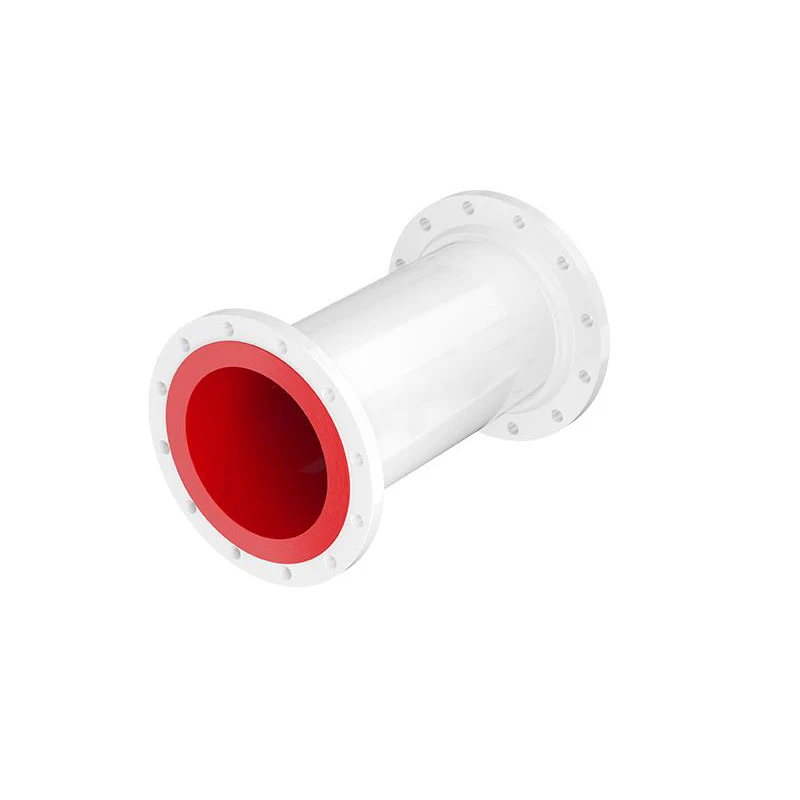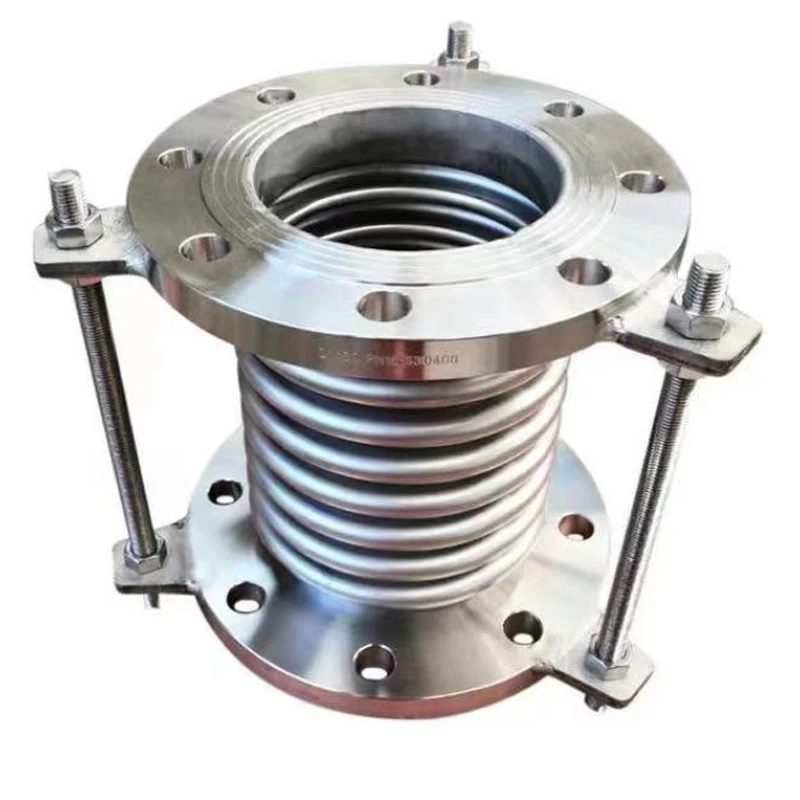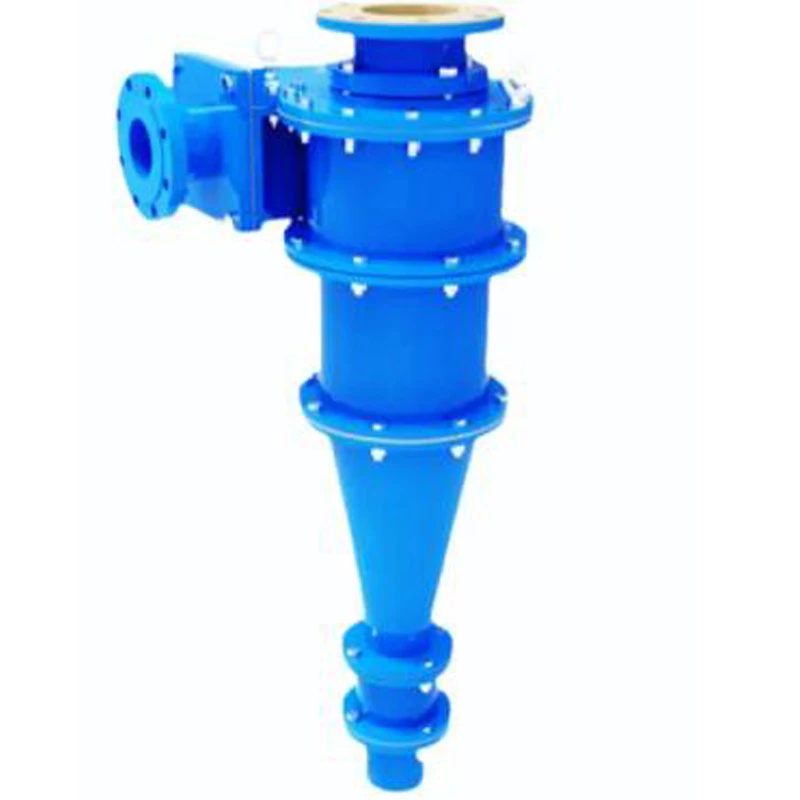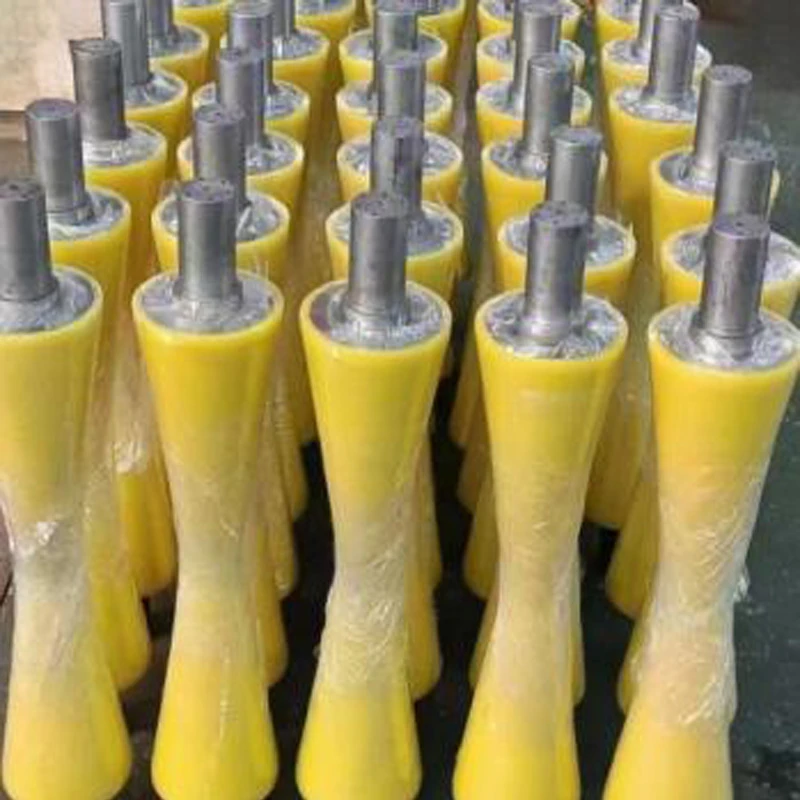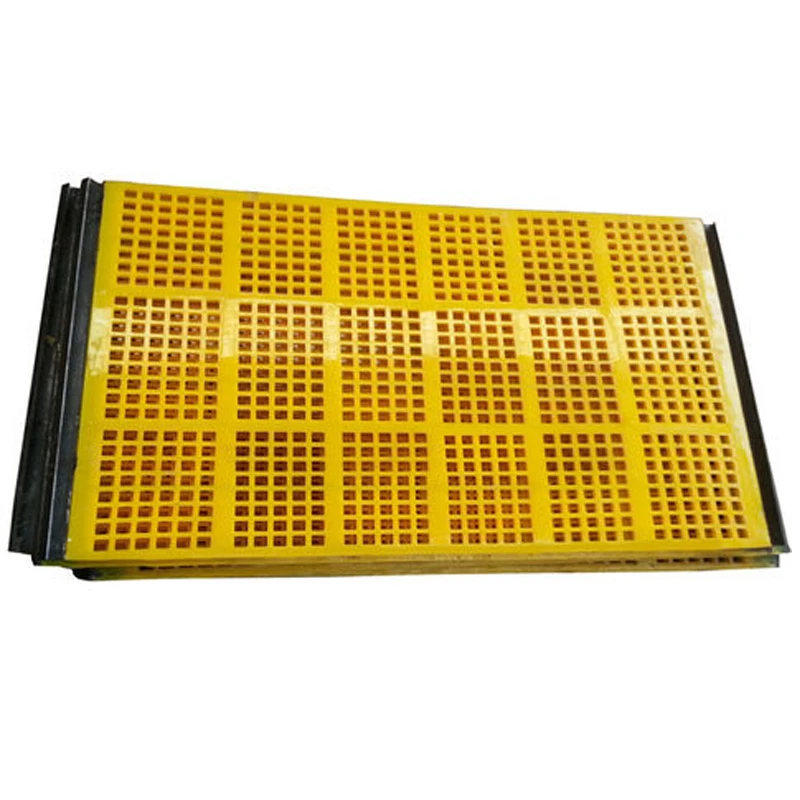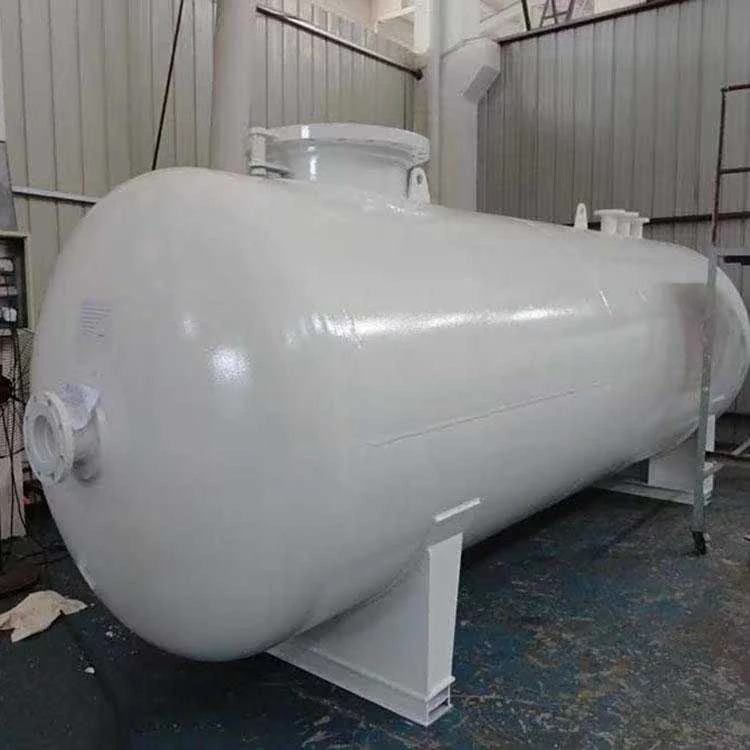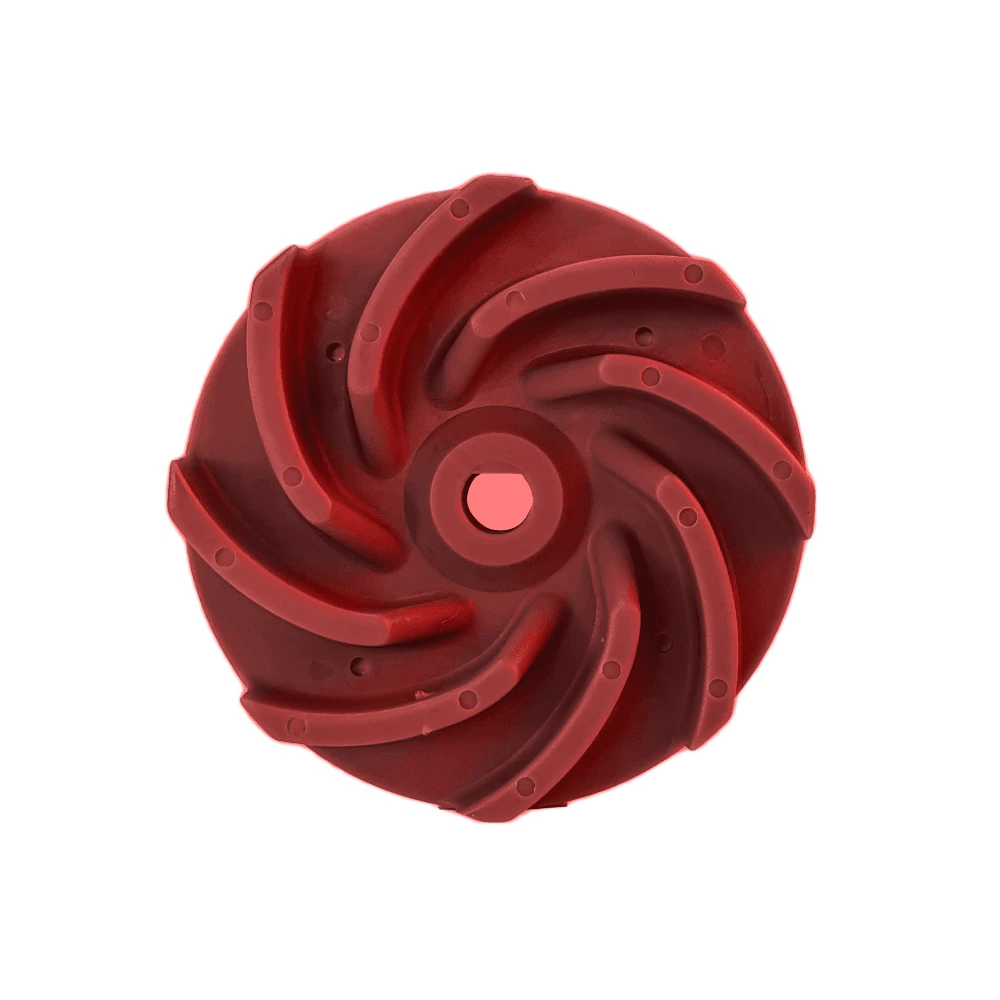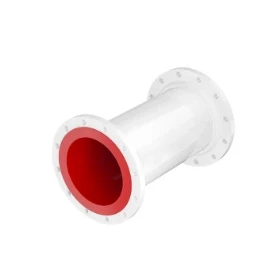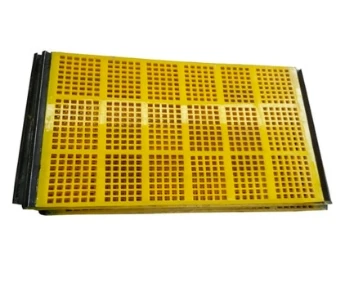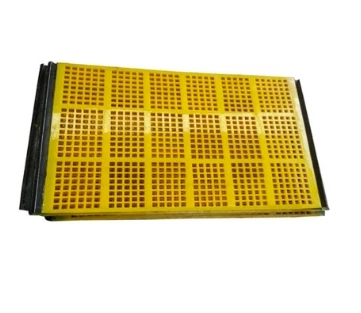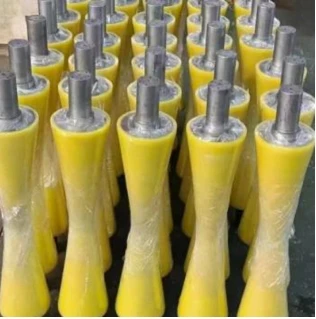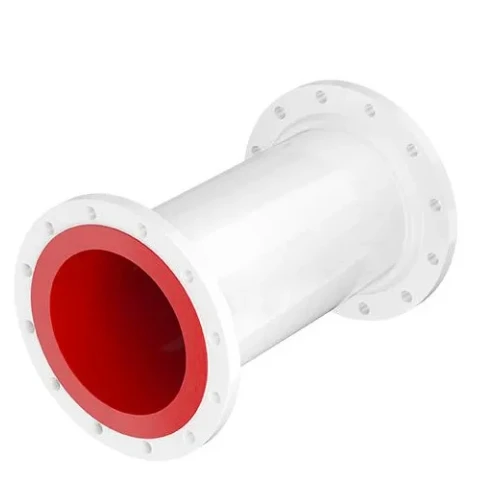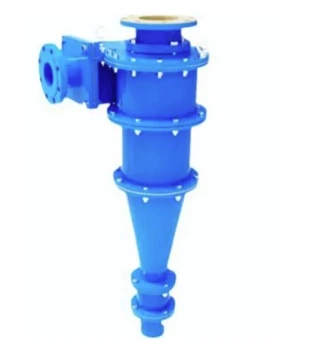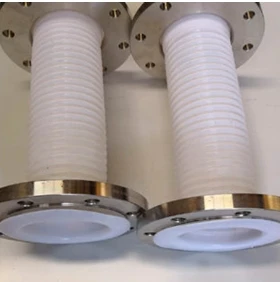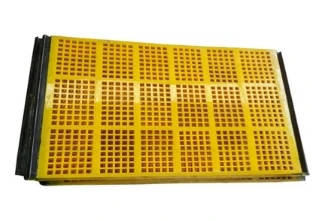Lined Pipe Fittings: High Performance & Corrosion Resistance
Unveiling the Resilience: A Deep Dive into Polyurethane Lined Pipe Fittings and Their Industrial Impact
In the demanding world of industrial fluid and slurry transportation, the integrity and longevity of piping systems are paramount. Components such as elbows, tees, and reducers are subjected to extreme wear from abrasion, corrosion, and high pressures. This is where lined pipe fittings emerge as an indispensable solution, offering superior protection and extending the operational lifespan of critical infrastructure. Our focus today is on the Polyurethane Lined Elbow Pipe, a prime example of engineering excellence designed to tackle the most aggressive industrial challenges.
Industry Trends and the Growing Demand for Advanced Pipe Lining Solutions
The global market for industrial piping and fittings is experiencing robust growth, driven by expanding infrastructure projects, increasing demand from the oil and gas sector, mining, chemical processing, and wastewater treatment industries. A significant trend within this market is the shift towards materials and designs that offer enhanced durability, reduced maintenance, and improved environmental performance. Conventional piping, particularly in high-abrasion or corrosive environments, often succumbs to premature failure, leading to costly downtime, product loss, and environmental hazards. This vulnerability has accelerated the adoption of advanced lining technologies.
Key drivers include:
- Sustainability Imperatives: Industries are increasingly seeking solutions that minimize material waste and energy consumption, and extend asset life, aligning with global sustainability goals.
- Operational Efficiency: The drive to reduce operational expenditure (OPEX) through minimized downtime and lower maintenance frequency is pushing demand for more resilient components.
- Complex Media Handling: Modern industrial processes often involve highly abrasive slurries, corrosive chemicals, and high-temperature fluids, necessitating specialized protection.
- Regulatory Compliance: Stricter environmental regulations and safety standards compel industries to invest in reliable, leak-proof piping systems.
The demand for specialized lined pipe manufacturers capable of delivering high-performance, custom-engineered solutions like the Polyurethane Lined Elbow Pipe is therefore on a steady upward trajectory.
Polyurethane Lined Elbow Pipe: Technical Mastery and Unmatched Performance
The Polyurethane Lined Elbow Pipe, specifically designed to navigate directional changes in pipeline systems, represents a pinnacle in wear and corrosion resistance. Its unique construction combines the structural integrity of a robust outer steel shell with the exceptional protective qualities of an inner polyurethane lining.
Material Science at Play: Polyurethane (PU) as a Liner
Polyurethane is an elastomer renowned for its remarkable combination of properties, making it an ideal lining material for severe service conditions. Unlike traditional rubber or ceramic linings, polyurethane offers:
- Superior Abrasion Resistance: Especially effective against fine particulate slurries and high-velocity flows. Its resilience allows it to absorb impact rather than chip or wear away. This is often quantified by the Taber Abrasion Index (ASTM D4060), where polyurethane typically outperforms steel by 3-5 times.
- Excellent Chemical Resistance: While not universally resistant to all chemicals, specific polyurethane formulations can withstand a wide range of acids, alkalis, and solvents commonly found in industrial processes.
- High Elasticity and Resilience: Polyurethane can deform under stress and return to its original shape, which is crucial for handling fluctuating pressures and impacts from conveyed materials. Its Shore Hardness (ASTM D2240) can be customized, typically ranging from 60A to 75D, allowing for optimal balance between flexibility and abrasion resistance.
- Low Coefficient of Friction: This property facilitates smoother flow, reduces energy consumption (pumping costs), and minimizes material buildup within the pipe.
- Noise Dampening: The inherent properties of polyurethane can significantly reduce noise levels associated with turbulent fluid flow, contributing to a safer working environment.
Key Product Specifications for Polyurethane Lined Elbow Pipes
Understanding the specific parameters is crucial for selecting the right lined pipe fittings for your application. Below is a general overview of typical specifications for our Polyurethane Lined Elbow Pipe, product available at https://www.qwmetal.com/polyurethane-lined-elbow-pipe.html:
| Parameter | Typical Range/Value (Polyurethane Lined Elbow Pipe) | Notes/Standards |
|---|---|---|
| Outer Pipe Material | Carbon Steel (ASTM A53, A106, API 5L Gr. B), Stainless Steel (304, 316) | Selected based on pressure, temperature, and external environment |
| Lining Material | Polyurethane (PU) Elastomer | Specific formulations for abrasion, chemical, or heat resistance |
| Lining Hardness (Shore A) | 60A - 95A (customizable) | Softer for impact, harder for sliding abrasion; per ASTM D2240 |
| Lining Thickness | 6mm to 25mm+ (0.24" to 1.0"+) | Dependent on pipe diameter, severity of service; designed for longevity |
| Pipe Diameter (DN/NPS) | DN50 (2") to DN1000 (40") and larger | Custom sizes available; standard pipe schedules (Sch. 40, 80, 120, etc.) |
| Pressure Rating | Up to 1500 PSI (10.3 MPa) / ANSI Class 600 | Matches outer steel pipe rating; hydrostatically tested per ASME B16.5 |
| Temperature Range | -20°C to +80°C (-4°F to +176°F) | Specific PU formulations can extend range for short durations |
| Flange Standard | ANSI B16.5, DIN, JIS, BS (customizable) | Welded or loose flanges for easy installation |
| Abrasion Resistance | Excellent (e.g., 20mm³ loss on Taber Abraser, 1000 cycles, 1kg load) | Significantly outperforms unlined steel in slurry applications |
| Service Life Expectancy | 5-10 times longer than unlined steel in abrasive applications | Varies greatly with application severity, maintenance, and material characteristics |
The Meticulous Manufacturing Process of Lined Pipe Fittings
The creation of high-quality Polyurethane Lined Elbow Pipe is a complex process demanding precision engineering and stringent quality control. It combines traditional metal fabrication with advanced polymer application techniques. While a short video or detailed diagram would best illustrate this, here's a step-by-step breakdown:
Manufacturing Flow for Polyurethane Lined Elbow Pipe:
- Raw Material Inspection & Preparation:
- Steel Pipe/Elbow Fabrication: High-grade carbon or stainless steel pipes are selected. Elbows are typically formed through hot bending (mandrel bending) or cold bending processes, or fabricated from pre-formed pipe sections and welded. All welds undergo Nondestructive Testing (NDT) such as X-ray or ultrasonic inspection to ensure structural integrity.
- Liner Material Preparation: High-quality polyurethane raw materials (prepolymers, curatives, additives) are sourced from reputable suppliers, ensuring specific properties like hardness, chemical resistance, and abrasion resistance.
(Imagine an arrow from 'Steel Stock' to 'Elbow Forming' and another from 'PU Resin Drums' to 'Mixing Unit')
- Surface Preparation of Outer Shell:
- The inner surface of the steel elbow is meticulously cleaned and prepared. This involves abrasive blasting (e.g., sandblasting or grit blasting to SA 2.5/NACE No. 2 standard) to remove rust, scale, and contaminants, creating an optimal surface profile for liner adhesion.
- Degreasing and solvent wiping further ensure a pristine surface.
(Arrow from 'Elbow Forming' to 'Blasting Chamber')
- Adhesive/Primer Application:
- A specialized bonding agent or primer is uniformly applied to the prepared inner surface of the steel elbow. This layer is crucial for establishing a strong, lasting bond between the steel and the polyurethane liner, preventing delamination during operation.
(Arrow from 'Blasting Chamber' to 'Primer Application Station')
- Polyurethane Lining Application (Casting/Molding):
- This is the core of the lining process. For intricate shapes like elbows, a casting or rotational molding technique is often employed.
- Pre-measured and thoroughly mixed liquid polyurethane components are poured into the prepared elbow. The elbow may be rotated or vibrated to ensure even distribution and to eliminate air bubbles.
- Precision molds are used to control the exact thickness and profile of the lining, especially critical for maintaining uniform bore diameter.
(Arrow from 'Primer Application' to 'PU Casting/Molding Unit')
- Curing Process:
- Once the polyurethane is applied, it undergoes a controlled curing process. This typically involves heating the lined elbow in an oven at specific temperatures for a set duration (e.g., 60-80°C for several hours) to facilitate the polymerization reactions and achieve full material properties. Proper curing is essential for optimal hardness, strength, and chemical resistance.
(Arrow from 'Casting/Molding' to 'Curing Oven')
- Finishing & Machining:
- After curing, the lined elbow may undergo finishing operations. This could include trimming any excess polyurethane, flange facing, or light machining to ensure precise dimensions and smooth transitions at the pipe ends for proper connection.
(Arrow from 'Curing Oven' to 'Finishing/Machining Station')
- Quality Control & Inspection:
- Every Polyurethane Lined Elbow Pipe undergoes rigorous inspection to ensure it meets design specifications and quality standards (e.g., ISO 9001, ANSI B16.5).
- Visual Inspection: Checking for surface defects, uniform lining thickness, and proper adhesion.
- Spark Testing (Holiday Detection): A high-voltage spark tester is used to detect any pinholes or discontinuities in the lining, ensuring a continuous protective layer.
- Lining Thickness Measurement: Ultrasonic or other non-destructive methods verify the liner thickness.
- Adhesion Testing: Samples or non-destructive methods may be used to verify the bond strength between liner and steel.
- Hydrostatic Pressure Testing: The completed fitting is hydrostatically tested to its rated pressure to ensure no leaks and structural integrity.
- Dimensional Inspection: Verification of overall dimensions, flange alignment, and bore diameter.
(Arrow from 'Finishing' to 'Quality Control & Testing')
- Packaging & Shipping:
- The finished and approved lined pipe fittings are carefully packaged to prevent damage during transit, ready for delivery to the client.
(Arrow from 'Quality Control' to 'Packaging & Shipment')
This detailed process underscores our expertise and commitment to delivering the highest quality lined pipe fittings. Each step is meticulously controlled, ensuring that the final product offers exceptional performance and longevity in the most demanding industrial environments. Our manufacturing facilities adhere strictly to international standards such as ISO 9001 for quality management systems and ANSI/ASME for pressure vessel and piping components, reflecting our unwavering commitment to authoritative quality.
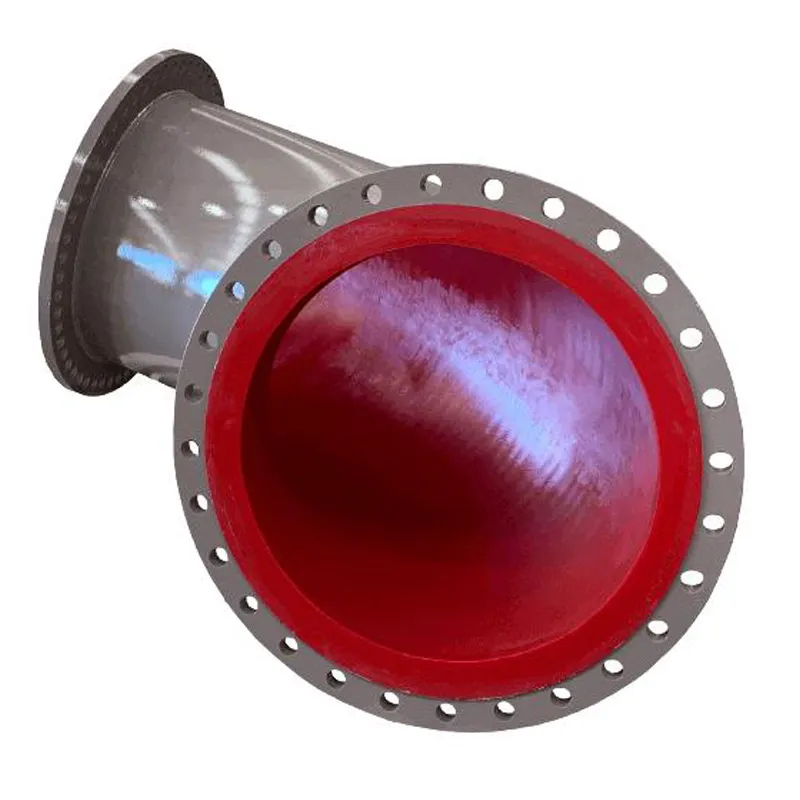
Application Scenarios: Where Polyurethane Lined Pipe Fittings Excel
The unique properties of Polyurethane Lined Elbow Pipes make them indispensable across a multitude of industries dealing with abrasive and corrosive media. Our experience extends to providing solutions for:
Mining and Mineral Processing:
- Slurry Transport: Crucial for pipelines carrying highly abrasive ore slurries (e.g., iron ore, copper concentrate, coal slurry, sand). Elbows are points of highest wear due to impingement, and polyurethane lining drastically extends their life, reducing costly shutdowns for component replacement.
- Tailings Lines: Handling residual waste material, often containing sharp particles and corrosive elements.
- Cyclone Feed & Discharge: High velocity and abrasive conditions in mineral separation processes.
Power Generation (Coal-Fired Plants):
- Ash Slurry Disposal: Transporting abrasive fly ash and bottom ash slurries from boilers to disposal ponds.
- Limestone Slurry: Used in Flue Gas Desulfurization (FGD) systems, often abrasive and corrosive.
Chemical and Petrochemical Industries:
- Corrosive & Abrasive Media: Pipelines handling acids, alkalis, and slurries that would rapidly degrade unlined steel.
- Fuel Pipe Elbows: While not typically lined with polyurethane for fuel itself (which requires specific chemical compatibility), in related processes where fuel production involves abrasive catalysts or intermediates, or in wastewater streams, these fittings are vital.
- Process Water Treatment: Handling water with suspended solids or chemical additives.
Dredging and Sand & Gravel Industries:
- Slurry Lines: Transporting sand, gravel, and silt mixtures from dredging sites.
- Wear-Prone Bends: Critical for sections experiencing high impact and sliding abrasion.
Wastewater Treatment:
- Sludge Lines: Moving various forms of sludge, which can be abrasive due to grit and particulates.
- Grit Removal: In areas where grit is separated, these fittings resist the abrasive action.
In all these scenarios, the primary advantage is significantly extended service life, which translates directly into reduced maintenance costs, minimized operational disruptions, enhanced safety, and lower total cost of ownership (TCO). For instance, a mining client reported a 7x increase in elbow lifespan after switching from conventional steel to polyurethane lined alternatives, drastically cutting their annual MRO (Maintenance, Repair, and Operations) budget.
Choosing the Right Lined Pipe Manufacturers: A Comparison Framework
Selecting the right supplier for your lined pipe fittings is as crucial as selecting the product itself. The market has various lined pipe manufacturers, but their capabilities, quality control, and customer support can vary widely. Here's a framework for comparison:
| Criterion | Our Approach/Advantages (QW Metal) | Typical Less Reputable Manufacturer |
|---|---|---|
| Expertise & Experience | Decades of experience in engineering and manufacturing of specialized industrial fittings, deep understanding of material science and application challenges. Service record dating back over 20 years. | Limited track record, generalists with less specific knowledge in advanced lining. |
| Material Sourcing & Quality | Utilize only premium-grade steel (e.g., API 5L, ASTM A106) and high-performance polyurethane resins from certified suppliers. Full material traceability. | May use lower-grade or inconsistent raw materials to cut costs, leading to premature failure. |
| Manufacturing Process | Advanced casting/molding techniques, automated processes, strict adherence to ISO 9001-certified quality management system. Precision machining and controlled curing. | Manual processes, inconsistent application, lack of proper curing controls, leading to voids or poor adhesion. |
| Quality Control & Testing | Comprehensive multi-stage QC: visual inspection, dimensional checks, spark testing, adhesion tests, hydrostatic pressure testing, NDT for welds. Adherence to ANSI standards. | Minimal or superficial QC checks, skipping critical tests like spark testing or hydrostatic tests. |
| Customization Capabilities | Extensive R&D and engineering team to design bespoke solutions for unique applications, including specific pipe diameters, flange configurations, and lining formulations. | Limited to standard sizes and materials, unable to adapt to complex project requirements. |
| Certifications & Compliance | ISO 9001:2015 certified, products comply with international standards like ANSI, ASME, ASTM. Third-party audit results available. | May lack relevant certifications or provide vague assurances without verifiable documentation. |
| After-Sales Support & Warranty | Dedicated technical support team, clear warranty policies (e.g., 12-24 months post-installation), maintenance guidance, and prompt issue resolution. | Poor or non-existent post-sales support, unclear warranty terms, difficult to get replacements or repairs. |
| Delivery & Logistics | Established global supply chain, reliable lead times, and efficient logistics for on-time delivery. | Inconsistent lead times, frequent delays, and limited shipping options. |
Custom Solutions: Tailoring Lined Pipe Fittings to Your Exact Needs
Recognizing that no two industrial applications are identical, we specialize in providing highly customized lined pipe fittings. Our engineering team works closely with clients from conceptual design to final fabrication, ensuring every aspect of the Polyurethane Lined Elbow Pipe (or other lined fittings) is optimized for specific operational parameters. This includes:
- Varying Diameters and Pressure Classes: From small bore instrumentation lines to large diameter slurry pipelines, and across various ANSI pressure classes.
- Custom Angle Elbows and Complex Geometries: Beyond standard 90° or 45° elbows, we can produce fittings with non-standard angles, reducers, and multi-branch configurations, all with precise polyurethane lining.
- Specialized Polyurethane Formulations: Depending on the specific abrasive particles, chemical composition of the media, or operating temperatures, we can adjust the Shore Hardness, chemical resistance, and temperature tolerance of the polyurethane lining. For instance, a formulation with higher tear strength for large, sharp particles, or one with enhanced chemical resistance for specific corrosive agents.
- Flange and Connection Types: Compatibility with existing piping systems is ensured through custom flange drilling, weld-neck, slip-on, or grooved connections.
- External Coatings: Application of external anti-corrosion coatings or paints to the steel shell for enhanced protection in harsh outdoor or corrosive environments.
This level of customization ensures maximum performance, longevity, and seamless integration into your existing or new systems, avoiding costly modifications on-site.
Case Study: Mitigating Erosion in a Mineral Processing Plant
A leading copper mining company in South America faced persistent challenges with severe erosion in their tailings pipeline, particularly at critical elbow sections. Conventional steel elbows required replacement every 3-4 months, leading to significant production downtime and substantial maintenance costs. After extensive consultation, our team recommended a shift to our Polyurethane Lined Elbow Pipes, specifically engineered with a high-durometer (90A Shore) polyurethane lining optimized for fine, highly abrasive tailings slurry. The solution involved a direct replacement of existing elbows with our custom-fabricated lined pipe fittings, ensuring a precise fit with existing flanges and pipe runs.
Results:
- Extended Lifespan: The Polyurethane Lined Elbow Pipes have now been in continuous service for over 24 months without any detectable wear or need for replacement, representing an unprecedented 800% increase in lifespan compared to the unlined elbows.
- Reduced Downtime: This translates to zero unscheduled shutdowns caused by elbow failure in two years, significantly improving overall plant availability and throughput.
- Cost Savings: The client estimates annual savings of approximately $150,000 in material costs (due to fewer replacements) and labor costs (due to reduced maintenance hours).
- Enhanced Safety: Fewer line breaches mean reduced risk of environmental spills and improved worker safety.
This case exemplifies our commitment to delivering practical, high-impact solutions that directly address client pain points and contribute to their operational success and bottom line. Our comprehensive after-sales support ensures continued optimal performance and client satisfaction.
Frequently Asked Questions (FAQ) about Lined Pipe Fittings
1. What types of materials can be transported through Polyurethane Lined Elbow Pipes?
Polyurethane lined pipes are ideal for highly abrasive slurries (e.g., sand, mineral ores, fly ash, coal slurry), wastewater, and certain chemicals. They excel where impact and sliding abrasion are major concerns. While highly versatile, it's crucial to verify compatibility for specific chemical concentrations and operating temperatures.
2. How does the service life of a lined pipe compare to an unlined pipe?
In highly abrasive applications, polyurethane lined pipe fittings can typically last 5 to 10 times longer than unlined steel pipes. In some severe cases, this lifespan extension can be even greater, significantly reducing maintenance and replacement costs. The exact lifespan depends on factors like slurry velocity, particle size/shape, and concentration.
3. Can Polyurethane Lined Elbow Pipes withstand high temperatures?
Standard polyurethane linings are typically suitable for continuous operating temperatures up to 80°C (176°F). Specialized high-temperature polyurethane formulations can extend this range for intermittent exposure or slightly higher continuous temperatures, but it's essential to specify the exact temperature requirements during the inquiry phase.
4. Are these fittings suitable for vacuum service?
Yes, properly designed and manufactured polyurethane lined pipe fittings can be suitable for full vacuum service. The strong adhesive bond between the liner and the outer steel shell prevents liner collapse under vacuum conditions. Our manufacturing process ensures complete adhesion and eliminates air pockets that could lead to issues in vacuum applications.
5. How are these lined fittings installed? Do they require special tools?
Polyurethane Lined Elbow Pipes are designed to be installed using standard pipe fitting techniques, typically connected via flanges that match industry standards (e.g., ANSI B16.5). While no special tools are generally required for installation, careful handling is advised to prevent damage to the lining, especially at the edges. Gaskets compatible with the conveyed media should always be used.
6. What are the common inspection standards for lined pipe fittings?
Key inspection standards include ISO 9001 (Quality Management System), ANSI/ASME B16.5 (Pipe Flanges and Flanged Fittings), and ASTM standards for material properties (e.g., ASTM D2240 for Shore Hardness, ASTM D4060 for Taber Abrasion). Non-destructive testing methods like spark testing (holiday detection) and hydrostatic pressure testing are crucial for verifying liner integrity and structural soundness.
7. What is the typical lead time for custom Polyurethane Lined Elbow Pipes?
Lead times vary depending on the complexity of the design, quantity, and current production schedule. For standard sizes and designs, lead times typically range from 4-8 weeks. For highly customized or large-volume orders, a specific timeline will be provided upon project review. We prioritize efficient communication and timely delivery, working closely with clients to meet project deadlines. We also offer global shipping capabilities.
Our Commitment: Trustworthiness and Unwavering Support
At QW Metal, we stand by the quality and performance of our Polyurethane Lined Elbow Pipe and all our lined pipe fittings. Our dedication to trustworthiness is reflected in:
- Comprehensive Quality Assurance: Every product undergoes rigorous testing and inspection protocols, adhering to international standards to ensure optimal performance and reliability.
- Robust Warranty Policy: We offer a comprehensive warranty, typically covering manufacturing defects for 12-24 months from the date of installation, providing our clients with peace of mind.
- Expert Technical Support: Our team of experienced engineers is available to provide pre-sales consultation, assist with product selection, offer installation guidance, and provide prompt after-sales support, ensuring your project's success.
- Transparent Delivery Schedules: We provide clear and realistic lead times, and our logistics team ensures efficient and reliable global delivery, keeping you informed every step of the way.
We believe that true partnership is built on trust, demonstrated through consistent product excellence and unwavering customer service. Our extensive service history and long-term partnerships with leading companies in the mining, energy, and chemical sectors are a testament to our reliability and dedication as leading lined pipe manufacturers.
Explore Polyurethane Lined Elbow PipesFurther Reading & Industry Insights:
For more in-depth technical specifications and industry best practices related to abrasion-resistant linings and their applications, consider consulting the following resources:
- ASTM International Standards (e.g., D2240 for Rubber Property—Durometer Hardness, D4060 for Abrasion Resistance of Organic Coatings by the Taber Abraser).
- "Polyurethanes in Elastomer Applications" by The Polyurethane Manufacturers Association (PMA).
- "Slurry Transport: A Guide for Practitioners" – Various editions available from scientific publishers and engineering forums focusing on hydrotransport. Example discussion from a relevant forum: Mining.com - Tech Developments in Abrasion-Resistant Linings (simulated link for context)
- "NACE International (now AMPP) Standards" for corrosion protection in process industries: AMPP.org - Corrosion Standards (simulated link for context)
- For specific academic insights into wear mechanisms: "Wear of Materials" Conference Proceedings or journals like 'Wear' published by Elsevier.
Related Products
Our main products are polyurethane lined pipes, mining equipment fittings and metal hoses.




